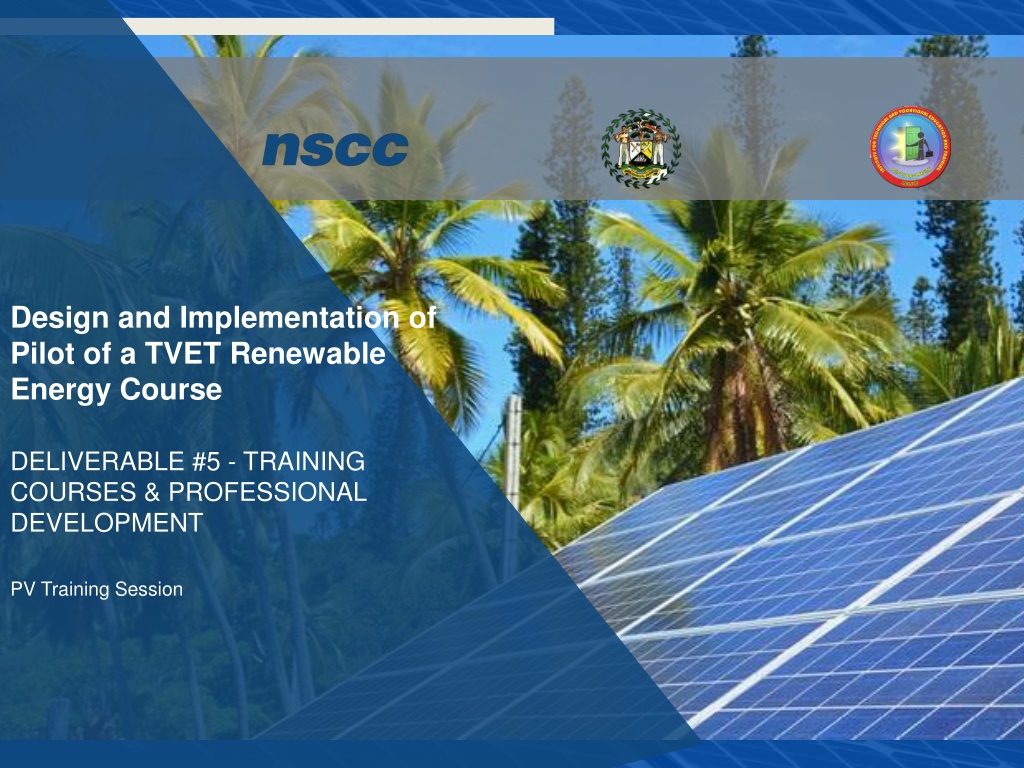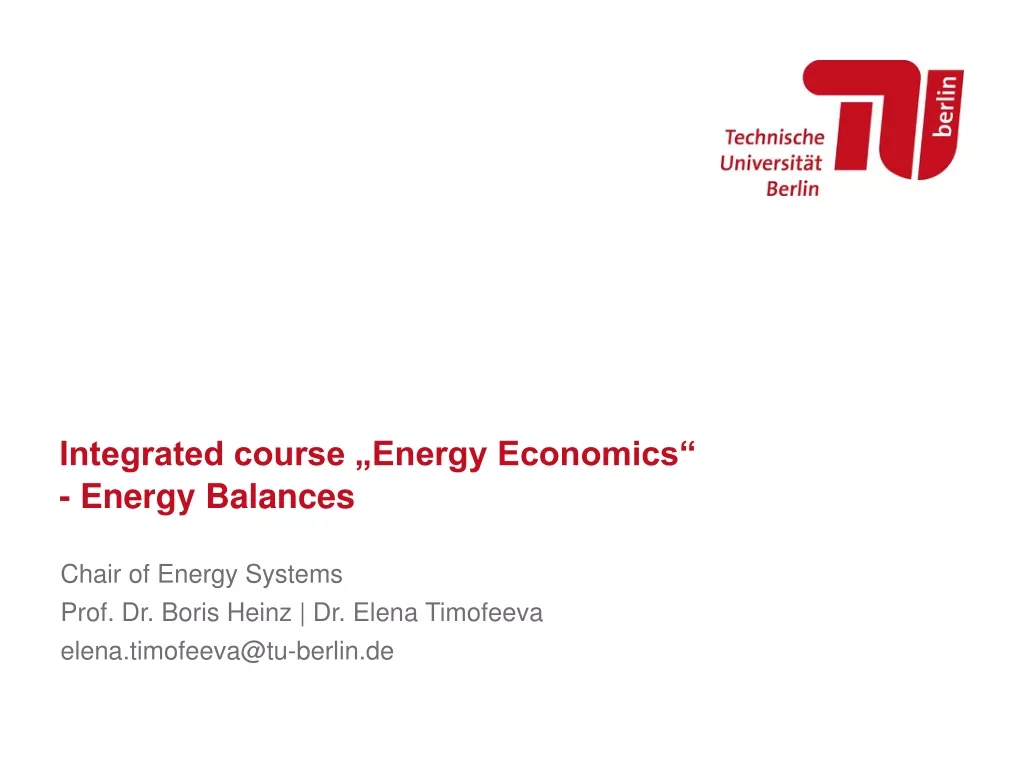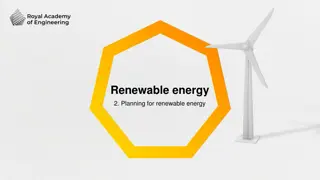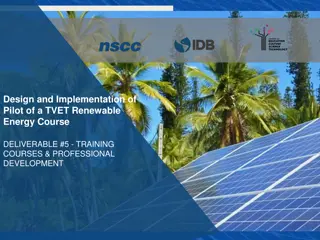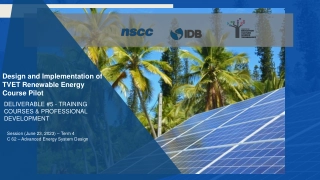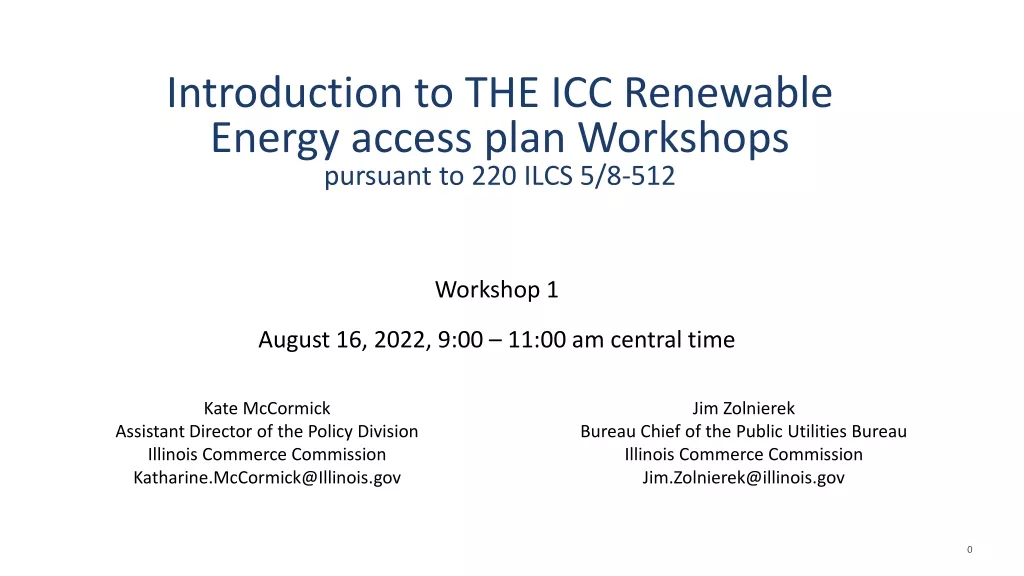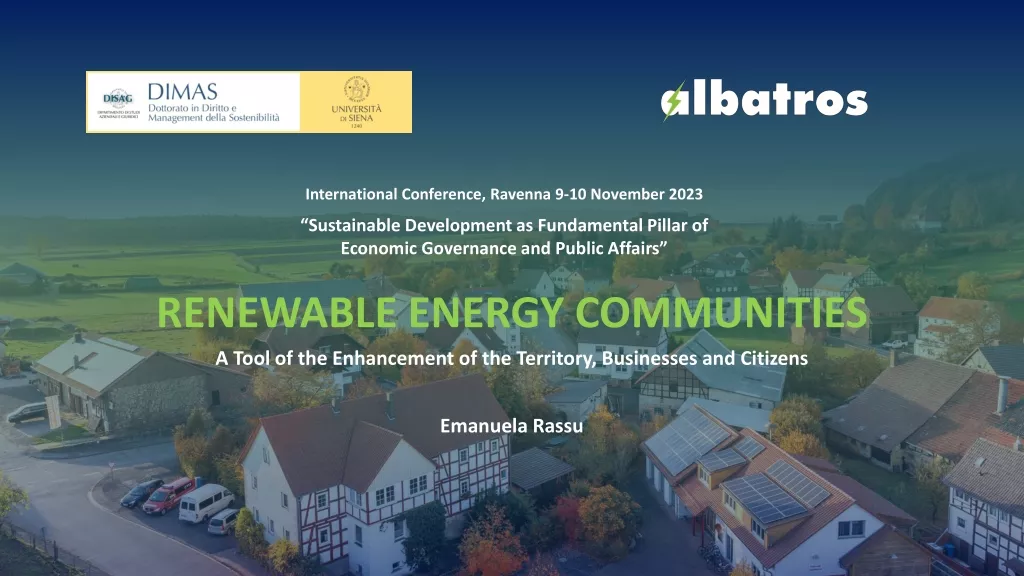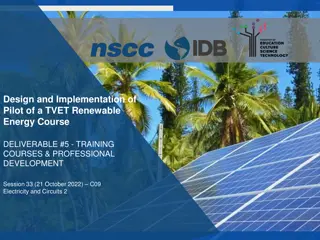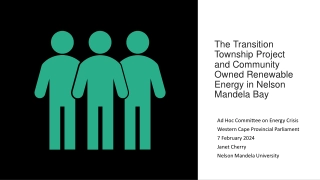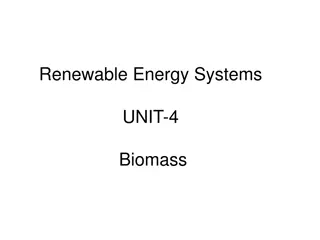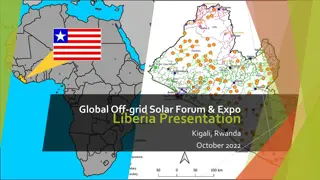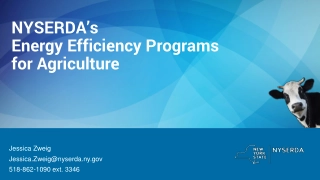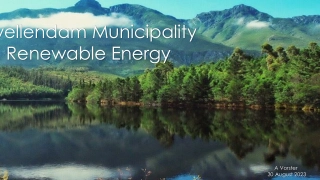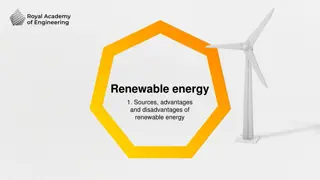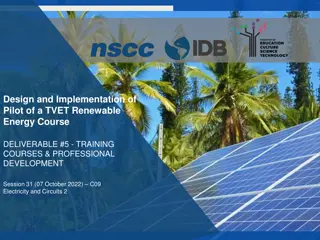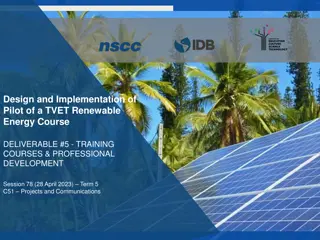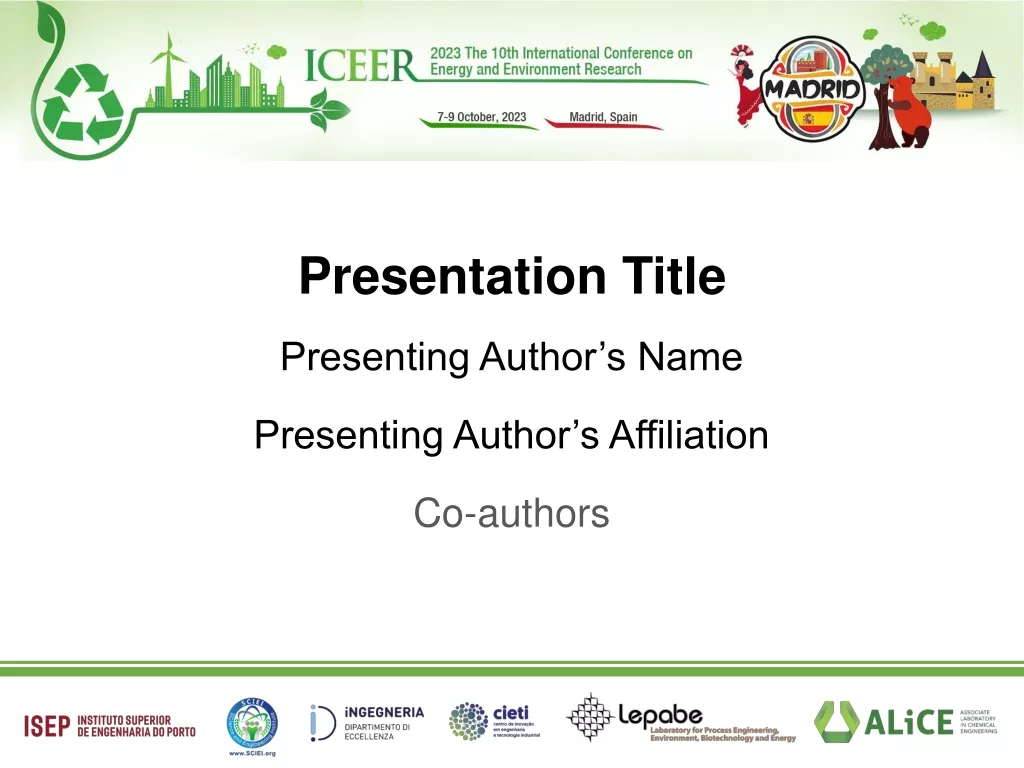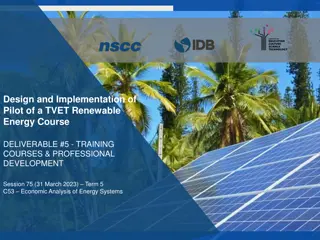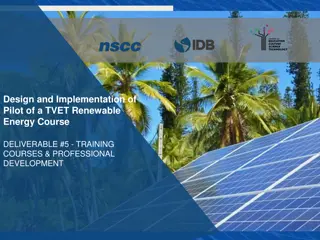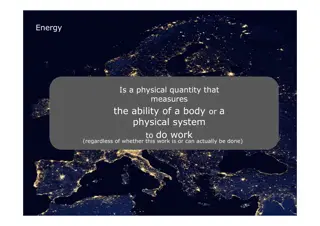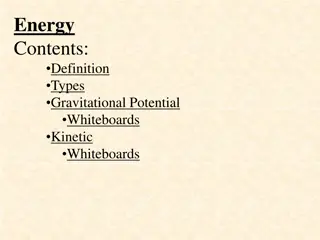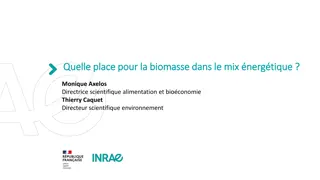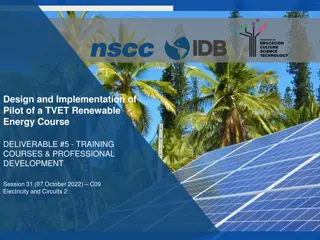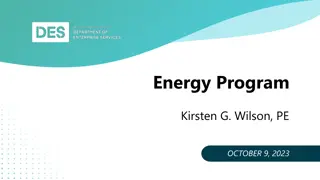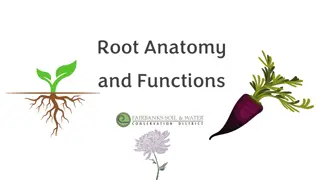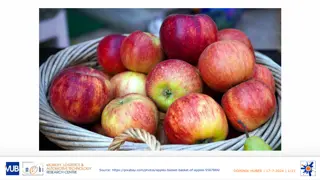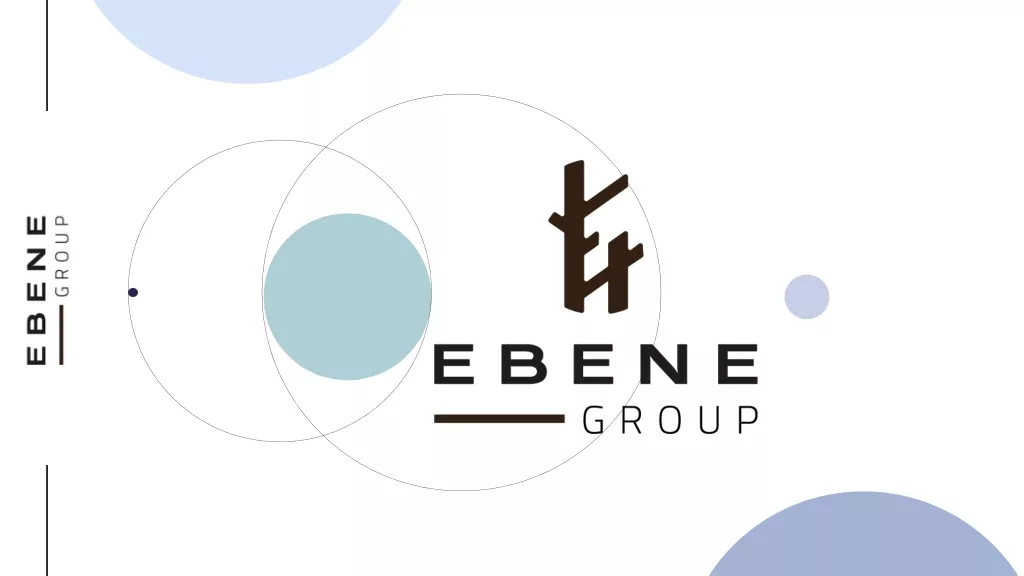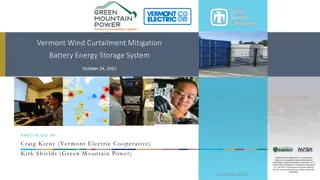Innovative Ground Mount Anchoring Systems for Renewable Energy Projects
Discover the efficiency and versatility of ground mount anchoring systems for renewable energy projects. Explore the five major types of anchoring methods such as screws, concrete piers, and ballasts. Learn how these systems are structured, installed, and tested for strength, with insights into popular manufacturers like Krinner and Ironridge.
Download Presentation

Please find below an Image/Link to download the presentation.
The content on the website is provided AS IS for your information and personal use only. It may not be sold, licensed, or shared on other websites without obtaining consent from the author. Download presentation by click this link. If you encounter any issues during the download, it is possible that the publisher has removed the file from their server.
E N D
Presentation Transcript
Design and Implementation of Pilot of a TVET Renewable Energy Course DELIVERABLE #5 - TRAINING COURSES & PROFESSIONAL DEVELOPMENT PV Training Session
Screws and Anchors Ground mount anchoring systems. 5 major types: Screws Concrete Helical Screws Driven Piers Ballast
Screws and Anchors Ground (soil/earth) screws are gaining popularity. They are versatile. Quick to install. Low impact on land drainage. Picture courtesy Ironridge
Screws and Anchors Ground screws are twisted into the ground. They are put in pace manually or by a machine. When a specified torque is measured at the correct depth the screw is then tested for pull up strength. Picture courtesy Ironridge
Screws and Anchors Ground screws use bolts to attach to the above ground racking system. Picture courtesy Ironridge
Screws and Anchors Ironridge provides a link to Krinner. Krinner is a manufacturer of a ground screw. https://www.krinner.io/fileadmin/user daten/Downloads/Englisch/Brochur es- Flyer/Product_catalog_2020_web.p df Picture courtesy Ironridge
Screws and Anchors Krinner ground screws come in different sizes. The longer and wider give the screws a better grip into the soil. Picture courtesy Krinner
Screws and Anchors Krinner as a system provider of ground screws offers its own range of devices for performing tensile, compression and horizontal tests. Picture courtesy Krinner
Screws and Anchors Questions?
Screws and Anchors Concrete as an anchor. Concrete piers provide excellent resistance to vertical and lateral loads. Constructed with readily available materials. Picture courtesy Ironridge
Screws and Anchors Concrete as an anchor. The depth and diameter of the concrete foundation will be designed based on soil type. The spacing of the concrete piers is based on wind loading. Picture courtesy Ironridge
Screws and Anchors Questions?
Screws and Anchors Helical screws as an anchor. These products provide very good resistance to uplift, but provide minimal resistance to lateral loads compared to concrete foundations. Picture courtesy Ironridge
Screws and Anchors Lower lateral load resistance results in: Shorter E-W pier spans More piers (foundations) Additional bracing
Screws and Anchors From an installation standpoint: These anchors may be faster to install, but increased material, equipment and engineering costs may outweigh any labor savings.
Screws and Anchors Questions?
Screws and Anchors PILE-DRIVEN OR VIBRATORY-DRIVEN PIERS as an anchor. From an installation standpoint: Specialized equipment and operators are required to install these types of foundations which increases the overall system costs. Picture courtesy Ironridge
Screws and Anchors This option does not utilize a helical blade or screw, which means that it will have a lower resistance to uplift forces. This necessitates deeper foundations. As with a helical pile, a PE will be required to determine the pier depth and spacing, and provide a letter for the foundation design. Picture courtesy Ironridge
Screws and Anchors Questions?
Screws and Anchors Ballast as an anchor. Ballast is for this application is using weight to keep the PV system anchored. This type of system does not penetrate anything into the ground. It relies on the weight of the ballast to keep it secured to the ground.
Screws and Anchors The ballast weight shall be designed by an engineer. The spacing and actual weight can vary. The weights can be made ahead of the construction.
Screws and Anchors The contour of the land does not need to be perfectly flat. Picture courtesy Thermo Dynamics Ltd.
Screws and Anchors The concrete blocks can be made ahead of time. Put in place with machinery. No excavation to pour concrete piers. L brackets are mounted in the concrete. Picture courtesy Thermo Dynamics Ltd.
Screws and Anchors This picture shows two panels in portrait high. Picture courtesy Thermo Dynamics Ltd.
Screws and Anchors Bolt through without clamps. Bolt through is the strongest method for attachment of panels to racking. Picture courtesy Thermo Dynamics Ltd.
Screws and Anchors Bolt through without standard mid and end clamps. Panel and racking. Picture courtesy Thermo Dynamics Ltd.
Screws and Anchors Questions?
